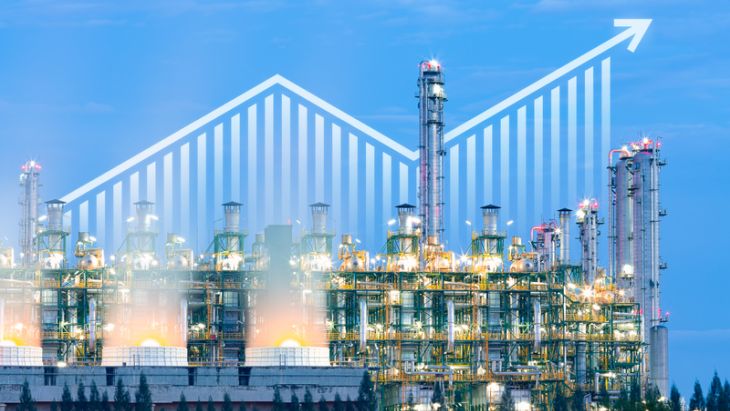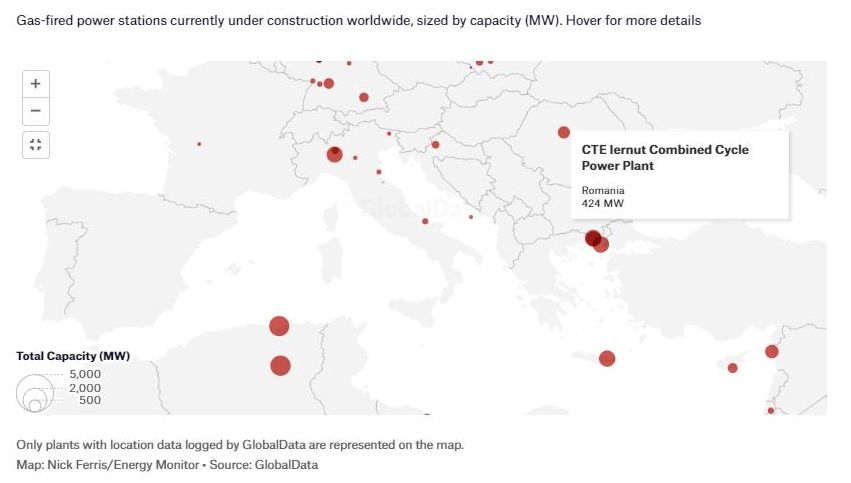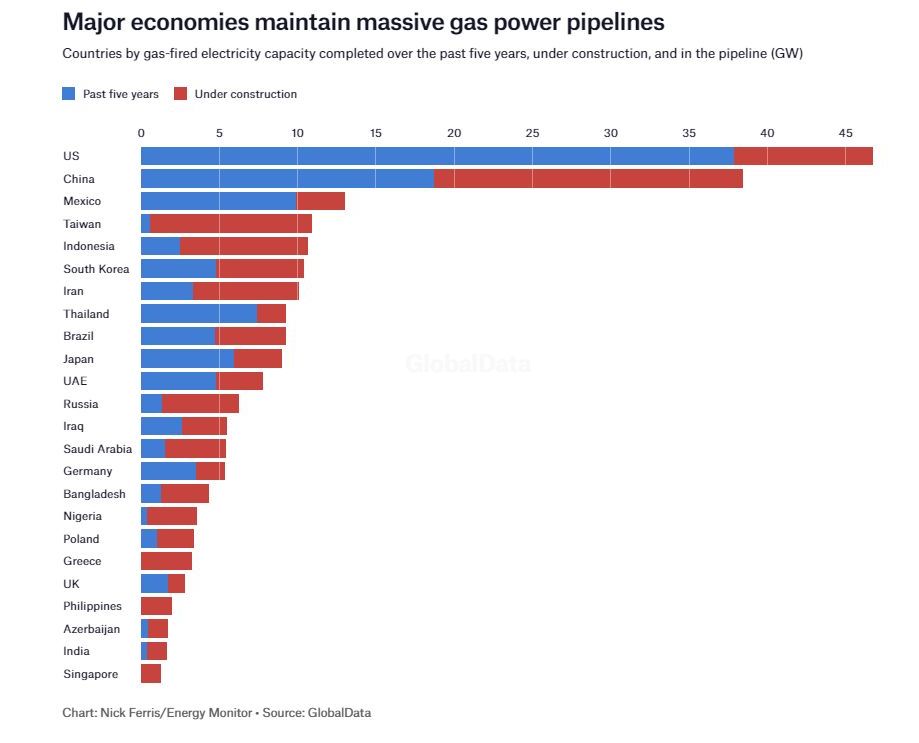There are 134 gigawatts (GW) of gas-fired power capacity under construction worldwide, writes Global Data in their latest Energy Monitor report. In Greece, there are 3.21 GW under construction at present, compared to none during the previous five years. The numbers might be seen as a surprise, given the “ample warnings about the role of natural gas in our energy systems from both a climate and an energy security point of view.”.
Data shared by GlobalData, Energy Monitor’s parent company, reveals what they call “power sector plans that are out of sync with the requirements of net zero by 2050 and enhancing energy security.”
In the South Eastern Europe, Greece stands out with 3.21 GW under construction at present, among them the larger units Terna Komotini (877 GW), Alexandroupoli (840 GW) and Aghios Nikolaos (826 GW). In Romania, the 424 gas-fired plant in Iernut is expected to be commissioned before the end of 2024, and another 3 GW are in discussion in Mintia, Ișalnița & Turceni. These latest projects are still part of the latest form of Romania’s National Energy and Climate Plan (PNIESC, here in RO). A new round of public debate on the NECP are scheduled in March.
Asia-Pacific, Europe, and the Middle East, and Africa all have more gas-fired capacity under construction now (67 GW, 18 GW and 27 GW, respectively) than was built over the past five years. There is a further 416 GW of gas-fired capacity in the pipeline globally, including permitting, financed and announced plants. More than half of that is in the Asia-Pacific.
This data contrasts sharply with the pathway laid out by the International Energy Agency (IEA) in its Net Zero Emissions Scenario, which shows gas demand declining by nearly 20% by 2030, and around 80% by 2050.
All the analysts quoted in the article decry the situation, considering that “there is no scenario in which we achieve the 1.5°C climate goal that allows for more gas-fired power plants” (Lorne Stockman, NGO Oil Change International), “gas power is no longer necessary for most of the power needed in an energy system, with renewable energy, energy efficiency, batteries, and interconnection a viable low-carbon solution” (Lisa Fischer, E3G), “it is now cheaper and faster to deploy wind and solar capacity in most geographies” (Bois von Kursk, Institute for Sustainable Development).
Seth Feaster, a US-based analyst at the Institute for Energy Economics and Financial Analysis, identifies “four serious risks associated with high gas dependence in the US for power”: fuel price volatility, short-term availability risks, long-term fuel supply risk, the growing risk that gas pipelines will not get built due to public opposition, for both environmental and local control reasons.
Apart from the countries not being fast enough in rolling out alternatives, “either because access to capital is an issue, or [because] they haven’t upgraded their energy systems to deal with more decentralised and flexible supply, or incumbent interests prevail” (Lisa Fischer), the article cites no expert to explain what the rationale behind this behaviour displayed by companies or countries is, – a topic that surely deserves more attention. Energynomics’ Regional Approach – Cooperation Working Table on February 23rd, in Athens, will cover this, as well as other relevant subject matters for today and tomorrow.



